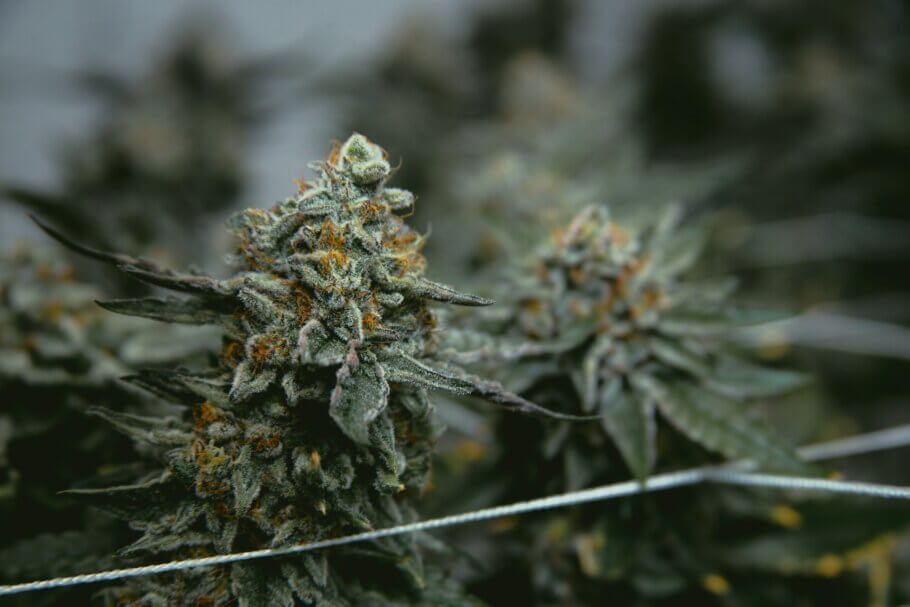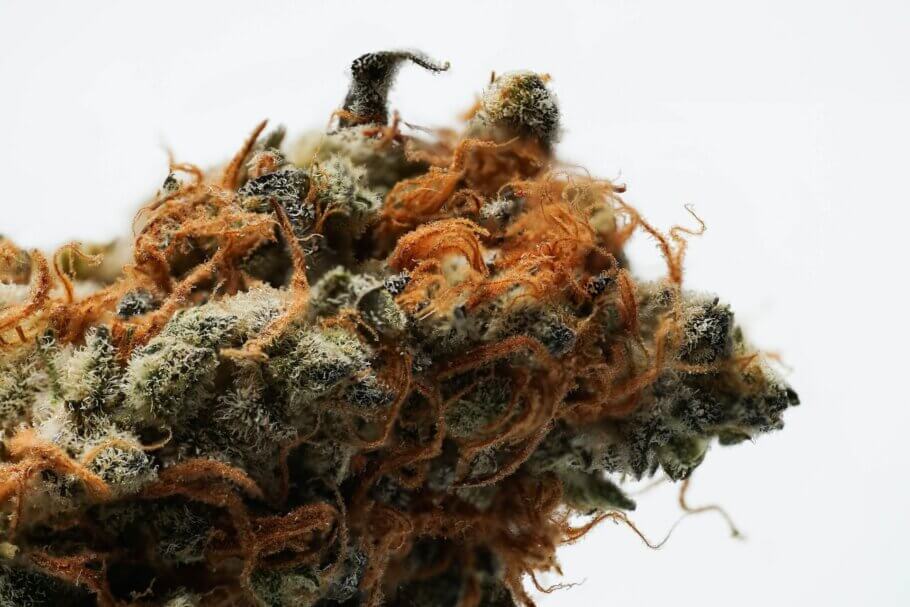UV light and cannabis- Alchimia Grow Shop

In the exciting world of indoor cannabis cultivation, the search for new methods and technologies that boost the quality and efficiency of our crops never stops. One of the lesser-known innovations in this field is the use of ultraviolet light, a technology that promises to revolutionize the way we grow and harvest our beloved plant while opening new doors for quality control and potency.
In this article, we invite you to discover how this technology works, its advantages and challenges, and how it is transforming the art and science of cannabis cultivation. From stimulating trichome production to protecting against pests, discover how UV light is illuminating the future of marijuana cultivation and laying the foundation for smarter, more sustainable…and more potent flower production!
What is ultraviolet light?
Ultraviolet light, commonly abbreviated as UV, is a form of electromagnetic radiation that is found beyond the visible spectrum of light, above – as its name indicates – violet light (or, in other words, below 400nm). We can find three main categories according to their wavelength:
UVA (Ultraviolet A):
It is near-ultraviolet light and has a longer wavelength. It is found in sun lamps and is related to skin aging.
- Wavelength: UVA has a wavelength that varies approximately from 320 to 400 nanometers (nm).
- Characteristics: UVA is near ultraviolet light. Although it is less energetic than UVB and UVC, it can penetrate deeper into the skin. It is known as the light responsible for premature skin aging due to its ability to damage collagen and DNA in skin cells.
- Applications: Used in solar lamps and artificial tanning booths. In addition, UVA is used in phototherapy to treat skin conditions, such as psoriasis and vitiligo.
UVB (Ultraviolet B):
It has an intermediate wavelength and is responsible for causing sunburn and increasing the risk of skin cancer.
- Wavelength: UVB has a wavelength that is in the range of approximately 280 to 320 nm.
- Features: UVB is responsible for causing skin damage, such as sunburn. Although its energy is higher than UVA, it does not penetrate as deeply into the skin. Excessive UVB exposure increases the risk of skin cancer and causes damage to cellular DNA.
- Applications: It is used in phototherapy to treat skin diseases, and is responsible for the production of vitamin D in the skin when exposed to sunlight.

UVC (Ultraviolet C):
It is the most dangerous and has a shorter wavelength. Fortunately, most UVC radiation is blocked by Earth’s atmosphere.
- Wavelength: UVC has the shortest wavelength, generally in the range of 100 to 280 nm.
- Characteristics: UVC is the most dangerous of the three UV categories. However, most UVC radiation is blocked by Earth’s atmosphere, so it does not reach the surface in significant quantities. It is used in disinfection and sterilization applications due to its ability to damage DNA and kill microorganisms, such as bacteria and viruses.
- Applications: UVC is used in germicidal lamps and disinfection systems, such as those used in water and air purification systems.
Ultraviolet light is invisible to the human eye but has a number of important applications in science, medicine, and technology, including disinfection, phototherapy, and chemical analysis. It is also used in the cultivation of plants, such as cannabis, to stimulate the production of trichomes and flavonoids, which can influence the quality and yield of crops.
Cannabis trichomes under the electron microscope
Have you ever imagined what cannabis would look like if we were very, very small? It is an interesting question that different researchers, fortunately, have decided to take on using different microscopy techniques. And not only for the aesthetic appreciation of the resulting images, but also to discover one of the best-kept secrets of the plant: how the trichomes behave like tiny biochemical factories to store the valuable compounds they produce.
We also see that each type of ultraviolet light has specific properties and applications, and its interaction with matter and organisms varies depending on its wavelength and energy. Exposure to UVB and UVA from sunlight can have significant effects on skin and health, while UVC is primarily used in disinfection and sterilization applications.
UV light and cannabis cultivation
As we saw in our article on how to increase the amount of THC in cannabis plants, some growers use ultraviolet light to achieve greater production of glandular trichomes in their buds, as well as a higher THC concentration. However, and as we also commented in the aforementioned study, the information from studies on the improvement in performance (both flower production and THC) of crops with UV applications seems contradictory. And we can find studies that deny an increase in yield in both flower and THC, while others assure that an improvement is noted in the development, production and potency of the plants.
What is clear is that if this type of lamp is used during cultivation, adequate protection is necessary for both the skin and the eyes, since prolonged exposure to this type of light can cause serious health problems. The ideal would be, therefore, to never be in the crop when they are on. Be that as it may, normally the types most used in cultivation to increase yields are UV-A and UV-B lights, which are usually installed as complementary luminaires to traditional HPS, LED, or T5 lamps (although some of these luminaires produce small quantities of UV light, if you want to get the most out of its use, it is advisable to use complementary UV lamps).
Also, keep in mind that it seems that the genetics of the plant itself can play an important role in whether or not this increase in the production of buds and trichomes is achieved, so with certain varieties, an obvious improvement may not be observed, while with others it is obvious to the naked eye. It is likely, therefore, that the contradictory results of the studies we have mentioned are due precisely to this genetic issue. Since the improvement is expected when producing flowers and resin, these lights are usually used in indoor crops (sunlight already provides enough UV rays) and during the flowering phase.

UV light against fungi
To combat fungi in crops, ultraviolet C (UV-C) light is often used, which as you have already seen has a wavelength in the range of 100 to 280 nanometers (nm). This type of ultraviolet light is effective in eliminating microorganisms such as fungi, since it damages their genetic material and prevents their reproduction, and is especially used for the treatment of pests such as powdery mildew or botrytis.
The use of ultraviolet light in the control of fungi in crops is carried out through disinfection technology with UV-C lamps. Here is a summary of how this process is carried out:
- Installation of UVC Lamps: In the environment of a greenhouse crop or in an indoor growing area, properly designed and strategically placed UV-C lamps are installed. These lamps emit high-energy UV-C radiation.
- Controlled Exposure: UV-C lamps are turned on in a controlled manner and are programmed to emit light at specific times. This may be during the growth period of the plants, during flowering, or when the presence of fungi has been detected.
- Continuous Disinfection: The UV-C radiation emitted by the lamps affects fungi and other microorganisms present in plants, the substrate, the air and surrounding surfaces. Exposure to UV-C damages the DNA of fungi, disrupting their life cycle and preventing them from reproducing.
- Monitoring and Adjustment: The disinfection process with UV-C lamps requires constant monitoring to guarantee its effectiveness and avoid negative effects on the plants or the personnel working in the crop. Excessive UV-C exposure can damage plant cells and human skin, so it is important to take precautions and adjust the intensity and exposure time as necessary. Furthermore, it has been proven that its effectiveness increases considerably when combined with correct ventilation and air renewal in the growing space.
As you can see, UV-C light is an effective tool for controlling fungi in crops, as it can help reduce the pathogen load and, consequently, improve plant health and performance. In fact, its use is common in other types of facilities where the most sterile environment possible is needed, such as hospitals, and it is used to purify air, water, or surfaces. However, its use must be carried out carefully and following safety guidelines, since UVC radiation is harmful to humans and plants if exposed in excess.
References:
- Indoor-grown cannabis yield increased proportionally with light intensity, but ultraviolet radiation did not affect yield or cannabinoid content, David Llewellyn, Scott Golem, Elizabeth Foley, Steve Dinka, A. Maxwell, P. Jones, Youbin Zheng
- UV-B radiation effects on photosynthesis, growth and cannabinoid production of two Cannabis Sativa chemotypes, John Lydon, Alan H. Teramura, C. Benjamin Coffman
- Cannabis Inflorescence Yield and Cannabinoid Concentration Are Not Increased With Exposure to Short-Wavelength Ultraviolet-B Radiation, Victoria Rodriguez-Morrison, David Llewellyn, Youbin Zheng
- Cannabis cultivation facilities: UV-C’s role in protecting crops & efficiency, Wladyslaw J Kowalski
- Cannabis sativa L.: Crop Management and Abiotic Factors That Affect Phytocannabinoid Production, Ingrid Trancoso, Guilherme Augusto, Rodrigues de Souza, Paulo Ricardo dos Santos, Késia Dias dos Santos, Rosana Maria dos Santos, Nani de Miranda, Amanda Lucia Pereira Machado, Dennys Zsolt Santos, I.F. García-Tejero, E. Campostrini
The articles published by Alchimiaweb, S.L. are reserved for adult clients only. We would like to remind our customers that cannabis seeds are not listed in the European Community catalogue. They are products intended for genetic conservation and collecting, in no case for cultivation. In some countries it is strictly forbidden to germinate cannabis seeds, other than those authorised by the European Union. We recommend our customers not to infringe the law in any way, we are not responsible for their use.




